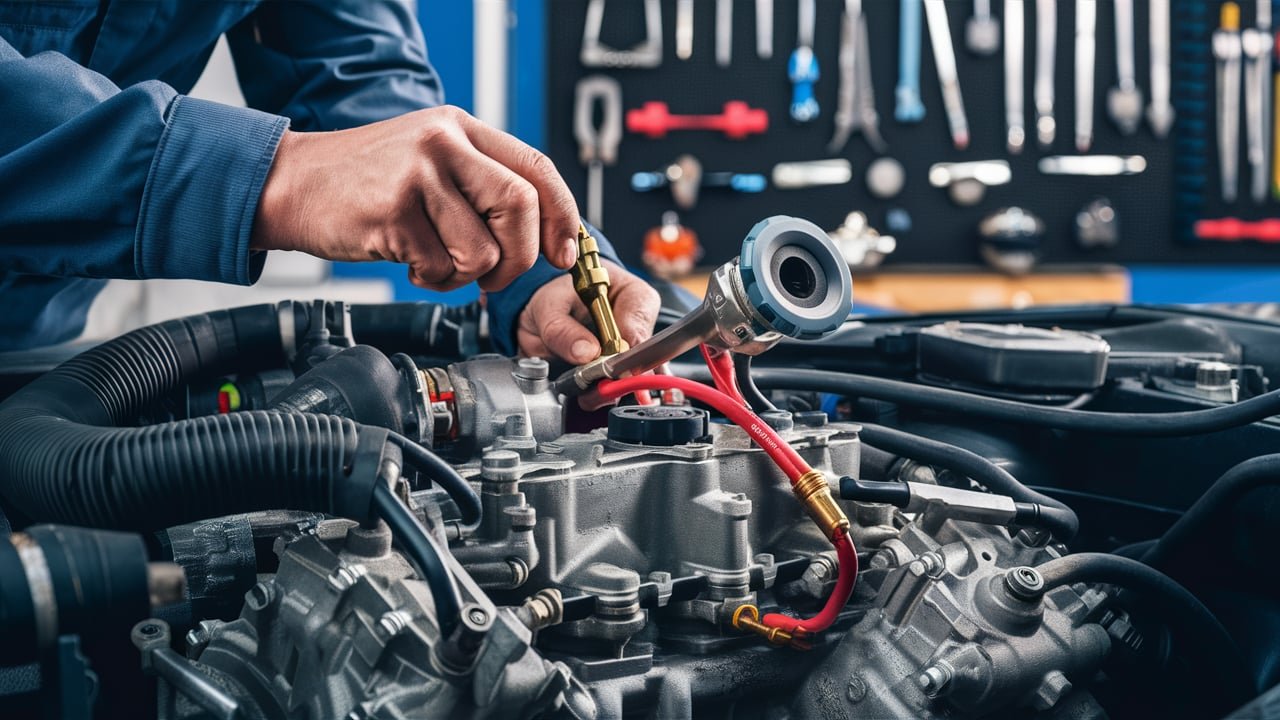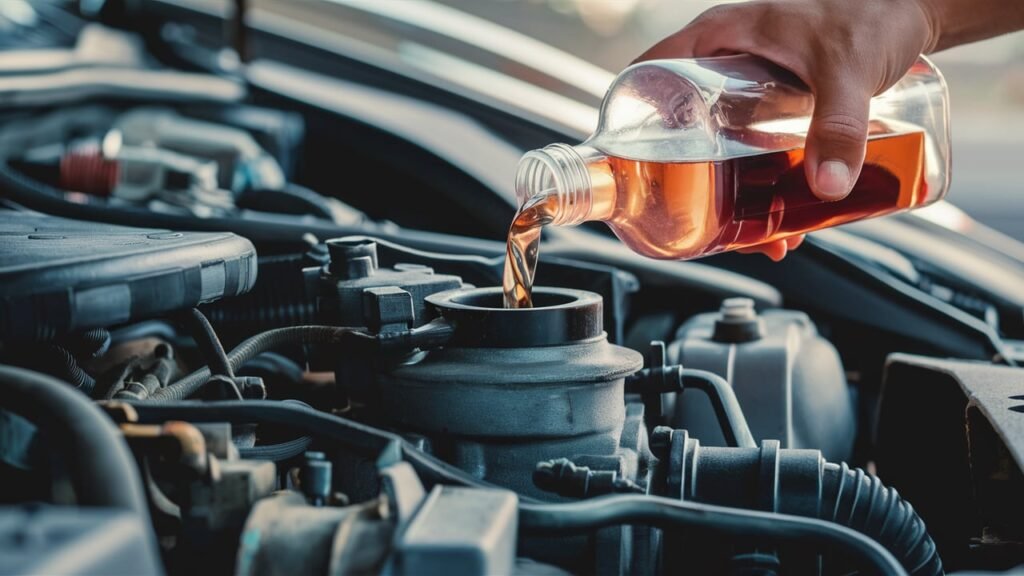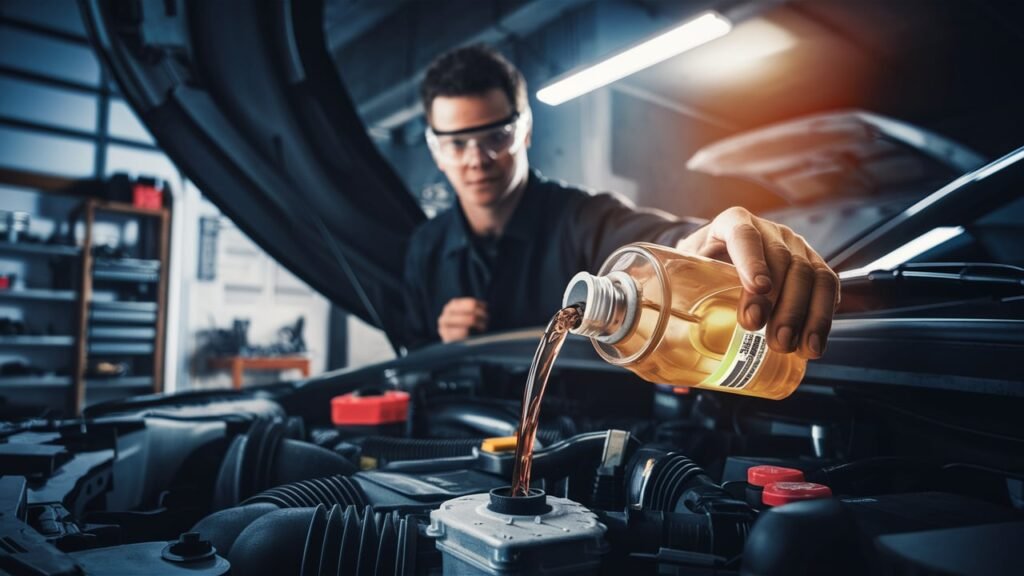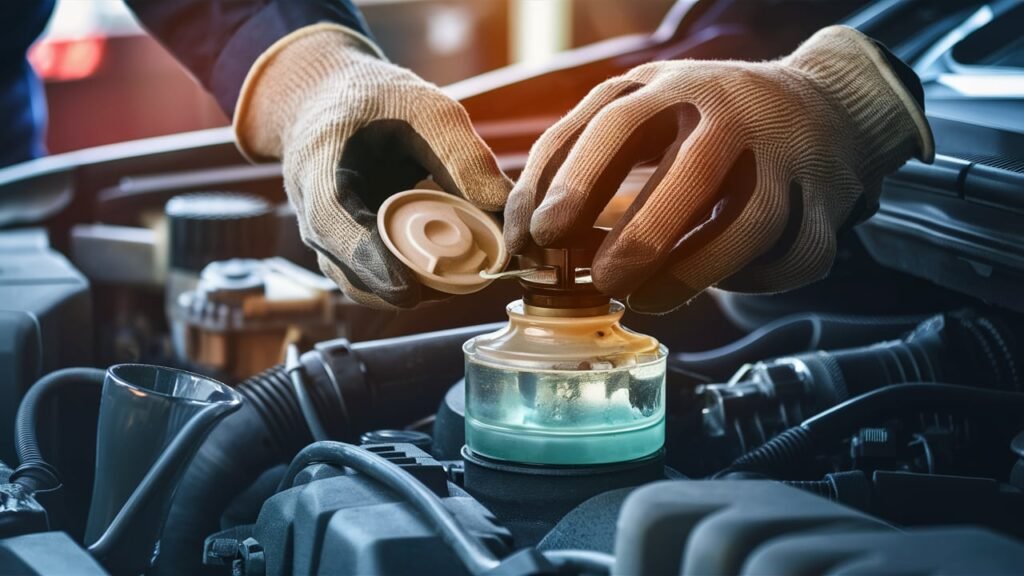
How to Perform Car Engine Brake Fluid Level Calibration
In the world of automotive maintenance, ensuring that your car’s braking system operates at peak efficiency is paramount. One crucial aspect of this upkeep involves the precise calibration of car engine brake fluid levels.
Brake fluid calibration, a meticulous process aimed at fine-tuning the amount of hydraulic liquid in the braking system, serves as a key step in optimizing overall performance.
By meticulously adjusting the fluid level to meet manufacturer specifications, this procedure ensures that your vehicle’s brakes respond efficiently and consistently to driver inputs.
Understanding the critical role brake fluid plays in a car’s braking system unveils the significance behind brake fluid level calibration. Brake fluid acts as a vital medium for transmitting force within the hydraulic brake system, facilitating the transfer of pressure from the brake pedal to the wheel cylinders or calipers.
Variances in fluid levels can lead to a compromised braking response, posing potential safety hazards and diminishing overall braking effectiveness.
Hence, maintaining accurate brake fluid levels through periodic calibration is not merely an option but a fundamental requirement for upholding driving safety standards and preserving your vehicle’s operational integrity.
Join me as we delve deeper into how to masterfully execute car engine brake fluid level calibration—a pivotal task that lies at the heart of optimal automotive performance.
Understanding Brake Fluid.
Brake fluid serves as a crucial component in a car’s braking system, responsible for transmitting the force applied to the brake pedal to the wheel brakes.
This hydraulic medium effectively transfers pressure from the master cylinder to the brake calipers or wheel cylinders, enabling them to clamp down on the rotors or drums and slow down or stop the vehicle.
As an incompressible substance with a high boiling point, brake fluid ensures that even under extreme heat and pressure during braking, it remains stable and efficiently transmits force without compressing.

In vehicles, two primary types of brake fluids are commonly used: glycol-based (DOT 3, DOT 4) and silicone-based (DOT 5). Glycol-based fluids are hygroscopic, meaning they absorb moisture over time from the surrounding environment. On the other hand, silicone-based fluids are hydrophobic and do not absorb water.
Using incorrect brake fluid can lead to detrimental consequences such as reduced braking performance, corrosion of internal brake components due to water accumulation, decreased boiling point resulting in brake fade under heavy use, and potential damage to rubber seals and hoses within the braking system.
Maintaining correct brake fluid levels is paramount for ensuring optimal braking performance while also preventing costly repairs or safety hazards caused by malfunctioning brakes.
By understanding the purpose of brake fluid, recognizing the different types available, and acknowledging the repercussions of improper levels, individuals can appreciate why regular calibration is essential for safe and efficient driving experiences.
Signs for Calibration Need.
Recognizing the signs that indicate a car’s brake fluid levels require calibration is crucial for maintaining optimal braking system performance. Common indicators include inconsistent brake pedal feel, spongy or soft brakes, and an overall decrease in braking effectiveness.
Drivers may notice that they need to press the brake pedal harder than usual to achieve the desired stopping power, signaling a potential issue with brake fluid levels. Additionally, if there is visible leakage around the brake reservoir or at any connection points in the hydraulic system, it could point towards a need for calibration.
Temperature fluctuations play a significant role in affecting brake fluid level accuracy. As temperatures rise, especially during prolonged hot weather conditions, the heat can cause the brake fluid to expand.
This expansion results in an apparent increase in fluid volume which may lead to false readings when checking the levels. Conversely, during colder climates or after driving in cold conditions, the contraction of brake fluid due to low temperatures can give inaccurate readings as well.

Therefore, understanding how temperature impacts brake fluid volumes is essential when calibrating accurately.
Air bubbles within the brake fluid system are another critical factor that can impact calibration and overall braking performance. When air enters the hydraulic lines or reservoir due to improper bleeding procedures or leaks, it creates pockets of compressible air within the system.
These air bubbles can lead to a spongy feeling in the brakes and reduced responsiveness when applying pressure on the pedal. Ensuring thorough bleeding of air from the system is vital when calibrating brake fluid levels to maintain consistent and reliable braking action on your vehicle.
Preparation for Calibration.
Before initiating the calibration process to ensure your car’s brake fluid levels are accurate, it is crucial to have the necessary tools at hand. To calibrate car engine brake fluid levels effectively, you will need a brake fluid tester or refractometer to measure the specific gravity of the fluid accurately.
Additionally, having a clean cloth or rag to wipe off any excess brake fluid during the process and a flashlight for proper visibility may prove beneficial. Ensuring that these tools are in optimal condition is essential for an accurate calibration procedure.
To begin the calibration process smoothly, conducting a pre-calibration vehicle check is imperative. Start by inspecting the existing brake fluid reservoir to verify if the level falls within the specified range provided by the manufacturer.

This preliminary check serves as a baseline assessment before adjustments are made during the calibration procedure. Additionally, examine for any signs of leaks or contamination in the brake fluid system that could interfere with accurate calibration results.
Prioritizing safety is paramount before commencing with any calibration task. Before working on calibrating car engine brake fluid levels, engage safety precautions such as wearing appropriate personal protective equipment like gloves and goggles to shield yourself from potential contact with harmful chemicals.
Moreover, ensure that the vehicle is parked on a flat surface and securely chocked to prevent any unintended movement during calibration. Always refer to specific safety guidelines outlined in your vehicle manual before proceeding with any maintenance procedures related to brake systems.
Performing Calibration Procedure.
To calibrate car engine brake fluid levels effectively, it is crucial to follow a structured process. Firstly, park the vehicle on level ground to ensure an accurate reading. Begin by locating the brake master cylinder reservoir, typically situated under the hood near the driver’s side firewall.
Remove the reservoir cap carefully to access the fluid. Before proceeding with any adjustments, it is essential to clean the area around the reservoir thoroughly to prevent any debris from contaminating the brake fluid, which could lead to system malfunctions.
Next, using a flashlight if necessary, visually inspect the current brake fluid level in the reservoir against the minimum and maximum marks indicated on its side. Ensure that the fluid level falls within this designated range for optimal braking performance.
If adjustments are needed due to low or high fluid levels, use a syringe or extraction tool to remove or add fluid accordingly until reaching the recommended level. Subsequently, gently replace the reservoir cap without over-tightening it to prevent leaks.

Throughout this calibration procedure, pay attention to any potential issues such as air bubbles trapped in the brake system. If air bubbles are present, bleeding may be required to release air pockets that can compromise brake function. Consider utilizing a bleeder kit for efficient removal of air from the system if needed.
It is also advisable to double-check all connections and seals post-adjustments to confirm that everything is secure before testing and finalizing your calibration efforts.
Testing and Verification.
After completing the calibration process for your car engine brake fluid levels, it is essential to test and verify the effectiveness of your adjustments. To ensure the calibrated brake fluid level is functioning correctly, one method involves conducting a series of braking tests in a safe environment.
Start with gentle stops to evaluate responsiveness, gradually increasing intensity to assess the system’s performance under varying pressures. This testing process allows you to gauge whether the recently calibrated brake fluid level has improved braking efficiency.
Verifying the success of the calibration procedure can be achieved through a visual inspection of the brake fluid reservoir. Ensure that the fluid level matches the manufacturer’s specifications after calibration.
Additionally, monitor braking performance over time to confirm consistent and reliable functionality post-adjustment. If you encounter any irregularities or notice discrepancies during these tests, it may indicate that further calibration or maintenance is required.
In case issues persist even after calibration, troubleshoot by rechecking all steps of the calibration process meticulously. Verify if each adjustment was made accurately and that all connections are secure within the braking system.
Should problems persist despite thorough checks, consult an expert mechanic or technician who can conduct a more detailed examination using diagnostic tools to identify any underlying complications affecting your car’s brake fluid operation.
Remember that safety should always be a top priority when attempting to resolve persistent issues related to brake fluid levels post-calibration.
Maintenance and Conclusion.
In order to maintain correctly calibrated brake fluid levels in your vehicle, it is essential to adhere to a routine maintenance schedule. Regularly checking and recalibrating car engine brake fluids can ensure optimal performance and safety while driving.
Consider scheduling checks of the brake fluid levels during routine maintenance or at least every 12 months, depending on your vehicle’s specific requirements. By proactively monitoring and adjusting the brake fluid levels, you can prevent potential issues that may arise from discrepancies in calibration.
In conclusion, understanding the intricacies of car engine brake fluid level calibration is crucial for mechanics, automotive technicians, and car enthusiasts alike.
By comprehending the significance of proper calibration, being aware of common signs indicating the need for adjustment, adequately preparing for the procedure, executing the calibration process diligently, testing results thoroughly, and following through with regular maintenance checks and recalibrations, individuals can ensure their vehicles operate optimally and safely.
Maintaining precise brake fluid levels not only enhances performance but also contributes significantly to overall road safety for both drivers and passengers.




